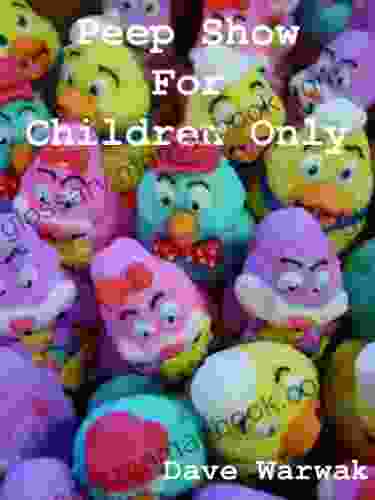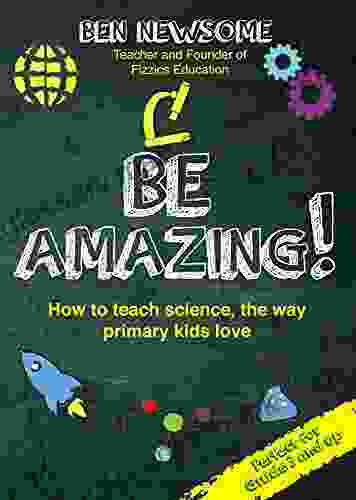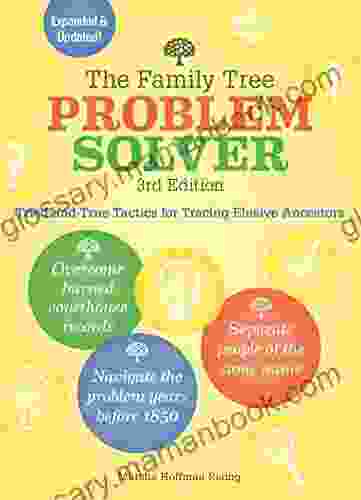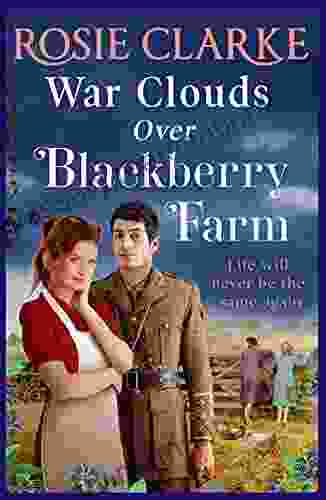How to Teach Science the Way Primary Kids Love

Science education plays a crucial role in shaping young minds, fostering curiosity, critical thinking, and problem-solving skills. However, teaching science to primary school children can be challenging, especially when they are used to traditional methods of instruction. This article provides an in-depth guide to transforming science education into an engaging and meaningful experience for primary kids, helping them develop a lifelong passion for science.
5 out of 5
| Language | : | English |
| File size | : | 19303 KB |
| Text-to-Speech | : | Enabled |
| Screen Reader | : | Supported |
| Enhanced typesetting | : | Enabled |
| Word Wise | : | Enabled |
| Print length | : | 240 pages |
Interactive and Hands-on Learning
Children learn best through hands-on experiences that allow them to interact with materials, conduct experiments, and make observations. Incorporate hands-on activities into your science lessons whenever possible, such as:
- Science experiments: Design experiments that demonstrate scientific concepts in a fun and engaging way, such as building a model volcano to learn about chemical reactions or exploring magnetism using magnets and paper clips.
- Science demonstrations: Conduct live demonstrations to capture students' attention and show them the awe-inspiring nature of science, such as creating a static electricity show or demonstrating the power of gravity.
- Field trips: Take students on field trips to science museums, nature centers, or local industries that relate to the topics being taught, providing real-world context and making learning more memorable.
Incorporating Play and Games
Children love to play and have fun, so why not incorporate these elements into your science lessons? Games and playful activities can make learning more enjoyable and effective:
- Science games: Engage students in science-based games that reinforce concepts and develop problem-solving skills, such as science charades or a science trivia contest.
- Science puzzles: Introduce puzzles, such as crosswords, word searches, or puzzles that challenge students to apply their scientific knowledge.
- Science role-play: Let students take on different roles, such as scientists, explorers, or inventors, and have them engage in science-related scenarios that allow them to explore concepts in a creative and imaginative way.
Inquiry-Based Learning
Inquiry-based learning encourages students to ask questions, investigate problems, and discover knowledge for themselves. This approach fosters critical thinking, problem-solving, and curiosity:
- Open-ended questions: Start lessons with open-ended questions that invite exploration and discussion, such as "What do you think happens if we mix these two chemicals?" or "Can you design a bridge that can withstand a certain amount of weight?"
- Student-led investigations: Give students the opportunity to design and conduct their own investigations, allowing them to pursue their interests and develop their research skills.
- Science fairs: Host science fairs where students can showcase their projects and share their findings with the class, fostering a sense of accomplishment and encouraging them to take ownership of their learning.
Technology in the Science Classroom
Technology can be a powerful tool for enhancing science education, providing access to simulations, virtual experiments, and interactive resources:
- Science simulations: Use science simulations to demonstrate complex concepts in a safe and engaging way, such as simulating the motion of planets or the chemical reactions in a cell.
- Virtual experiments: Allow students to conduct virtual experiments on computers or tablets, which can be especially useful for dangerous or complex experiments that are not feasible in the classroom.
- Online resources: Provide students with access to online resources, such as educational videos, interactive quizzes, and science news articles, to supplement their learning and explore topics in more depth.
Fostering a Love for Science
Beyond incorporating engaging teaching methods, foster a love for science in your students by:
- Connecting science to real life: Show students how science is relevant to their everyday lives and future aspirations, such as explaining how the human body works or discussing the science behind technological advancements.
- Highlighting diversity in science: Introduce students to scientists from diverse backgrounds and career paths, inspiring them to see themselves in the field and broaden their understanding of science.
- Encouraging science clubs and activities: Provide opportunities for students to engage in science outside of class through after-school science clubs, science competitions, or science-themed events.
By embracing these strategies, you can transform science education into a captivating and unforgettable experience for primary kids. By fostering curiosity, promoting critical thinking, and leveraging interactive and engaging approaches, you can nurture a lifelong passion for science in your students and equip them with the knowledge and skills they need to succeed in the future.
5 out of 5
| Language | : | English |
| File size | : | 19303 KB |
| Text-to-Speech | : | Enabled |
| Screen Reader | : | Supported |
| Enhanced typesetting | : | Enabled |
| Word Wise | : | Enabled |
| Print length | : | 240 pages |
Do you want to contribute by writing guest posts on this blog?
Please contact us and send us a resume of previous articles that you have written.
 Top Book
Top Book Novel
Novel Fiction
Fiction Nonfiction
Nonfiction Literature
Literature Paperback
Paperback Hardcover
Hardcover E-book
E-book Audiobook
Audiobook Bestseller
Bestseller Classic
Classic Mystery
Mystery Thriller
Thriller Romance
Romance Fantasy
Fantasy Science Fiction
Science Fiction Biography
Biography Memoir
Memoir Autobiography
Autobiography Poetry
Poetry Drama
Drama Historical Fiction
Historical Fiction Self-help
Self-help Young Adult
Young Adult Childrens Books
Childrens Books Graphic Novel
Graphic Novel Anthology
Anthology Series
Series Encyclopedia
Encyclopedia Reference
Reference Guidebook
Guidebook Textbook
Textbook Workbook
Workbook Journal
Journal Diary
Diary Manuscript
Manuscript Folio
Folio Pulp Fiction
Pulp Fiction Short Stories
Short Stories Fairy Tales
Fairy Tales Fables
Fables Mythology
Mythology Philosophy
Philosophy Religion
Religion Spirituality
Spirituality Essays
Essays Critique
Critique Commentary
Commentary Glossary
Glossary Bibliography
Bibliography Index
Index Table of Contents
Table of Contents Preface
Preface Introduction
Introduction Foreword
Foreword Afterword
Afterword Appendices
Appendices Annotations
Annotations Footnotes
Footnotes Epilogue
Epilogue Prologue
Prologue Jake Vanderplas
Jake Vanderplas Chris Brady
Chris Brady Michelle Halket
Michelle Halket Bern Dean
Bern Dean David Grossman
David Grossman Victoria Hislop
Victoria Hislop Morton Manus
Morton Manus Xi Liu
Xi Liu Lida R Baker
Lida R Baker Stephen R Donaldson
Stephen R Donaldson Catherine Lacroix
Catherine Lacroix Marilyn Shepherd
Marilyn Shepherd Emma S Rose
Emma S Rose Clive James
Clive James Jonathan E Hillman
Jonathan E Hillman Praedatorius
Praedatorius Rita Nabais
Rita Nabais Edna Lewis
Edna Lewis Rachel Riley
Rachel Riley William Faulkner
William Faulkner
Light bulbAdvertise smarter! Our strategic ad space ensures maximum exposure. Reserve your spot today!

 Oliver FosterPeep Show For Children Only: A Comprehensive Overview of the Hilarious and...
Oliver FosterPeep Show For Children Only: A Comprehensive Overview of the Hilarious and... J.D. SalingerFollow ·18.6k
J.D. SalingerFollow ·18.6k Gene PowellFollow ·17.8k
Gene PowellFollow ·17.8k Roger TurnerFollow ·19.5k
Roger TurnerFollow ·19.5k Darren NelsonFollow ·4.4k
Darren NelsonFollow ·4.4k Gene SimmonsFollow ·6.9k
Gene SimmonsFollow ·6.9k Fernando PessoaFollow ·13k
Fernando PessoaFollow ·13k Denzel HayesFollow ·4.4k
Denzel HayesFollow ·4.4k Donald WardFollow ·11.5k
Donald WardFollow ·11.5k

 Cody Blair
Cody BlairWill You Ever Pee Alone Again? The Future of Bathroom...
The bathroom has long been a place of...

 Al Foster
Al FosterNine Years Among the Indians 1870-1879: Witnessing Their...
In the annals of American...

 Pete Blair
Pete BlairYekl and the Imported Bridegroom: A Window into the New...
Abraham Cahan's Yekl and the...

 Pablo Neruda
Pablo NerudaSearch Engine Optimization Guide: A Non-Technical...
In today's digital landscape, having a...

 Nikolai Gogol
Nikolai GogolOne Piece Vol 77: Smile - The Saga Continues with...
The Enthralling World...

 Dan Henderson
Dan HendersonThree Farmers On Their Way To Dance
In a quaint countryside...
5 out of 5
| Language | : | English |
| File size | : | 19303 KB |
| Text-to-Speech | : | Enabled |
| Screen Reader | : | Supported |
| Enhanced typesetting | : | Enabled |
| Word Wise | : | Enabled |
| Print length | : | 240 pages |










